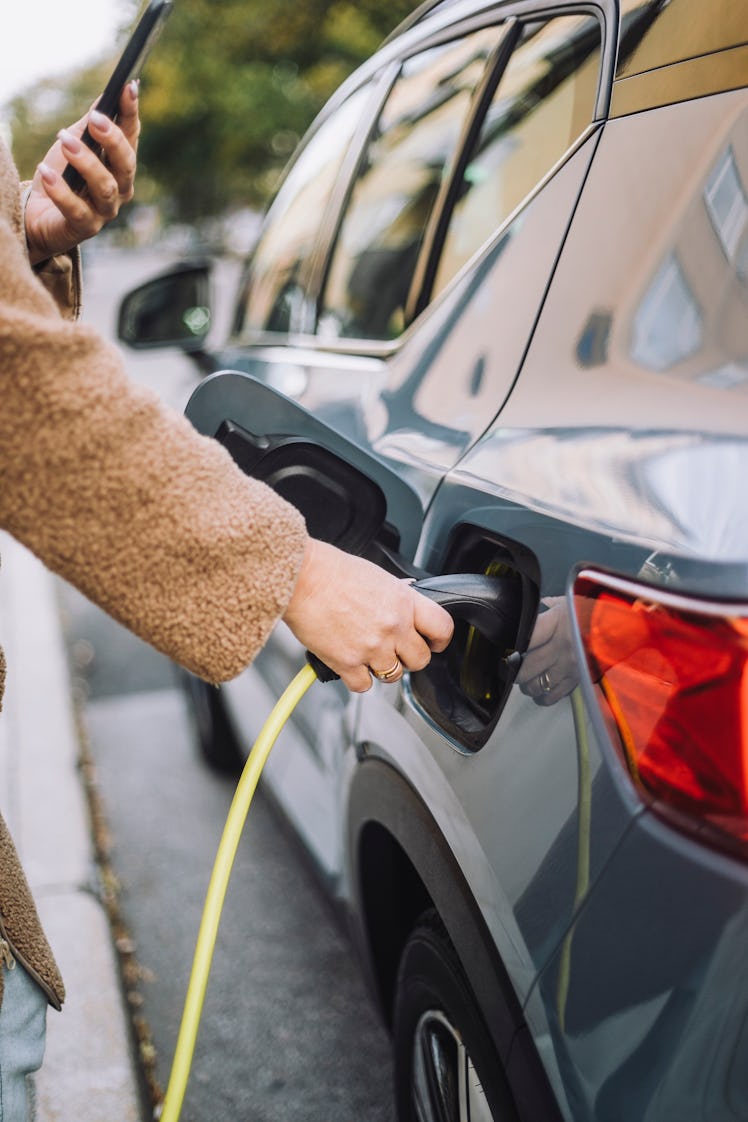New Study Finds Electric Vehicles Can Benefit Our Health
But mining the vehicles — and affording them — are significant obstacles.

Electric vehicles have been gaining in popularity over the last decade, accounting for almost 6% of total new vehicle sales in 2022, according to Kelly Blue Book data. With generous government tax incentives to encourage consumers to switch to electric, experts expect 145 million electric vehicles to be in use by 2030. However, the data concerning the actual environmental and health benefits of EVs have been slim in the past. But new research published in the journal Science of the Total Environment has found that the impact of electric vehicles is just as promising as expected.
The research team, from the University of Southern California’s Keck School of Medicine, examined publicly available datasets to determine changes in air quality and respiratory health as Californians shifted from gas-powered vehicles to EVs from 2013 to 2019. They found that on a local level, as the number of EVs registered within a certain zip code increased, certain air pollutants and asthma-related emergency room visits decreased in that zip code.
“When we think about the actions related to climate change, often it’s on a global level,” said study co-author Erika Garcia, Ph.D., MPH, an assistant professor of population and public health sciences at the Keck School of Medicine. “But the idea that changes being made at the local level can improve the health of your own community could be a powerful message to the public and to policy makers.”
The researchers found that for every additional 20 EVs per 1,000 residents in a zip code, hospitals experienced a 3.2% drop in asthma-related emergencies. The team also noted a slight local drop in nitrogen dioxide, a common and highly reactive greenhouse gas.
The average increase in electric vehicles throughout the state jumped from 1.4 per 1,000 people in 2013 to 14.6 per 1,000 people in 2019. Not all communities are able to afford electric vehicles, however. In low-resource zip codes, many consumers can’t afford the hefty price tag of an EV — which on average go for $66,000 as of 2022 — even with government tax incentives that offer $4,000 for used EVs and $7,500 for new EVs that meet specific manufacturing requirements under certain income limits.
In zip codes where only 17% of the adult population had a bachelor’s degree, the number of EVs increased by a mere 0.70 per 1,000 residents per year. In comparison, in zip codes where 47% had a bachelor’s degree, the increase was 3.6 EVs per 1,000 residents per year.
And although EVs are far more environmentally friendly (and better for asthma) than gas-guzzling cars, widespread EV adoption is a goal that has significant barriers.
For one, the resources used in the manufacture of EV batteries — the majority of EVs use lithium-ion batteries — can come at a high environmental and social cost.
And, though federal investment into building EV charging networks has exploded across the United States and will change the game, the dearth of charging stations outside of metropolitan areas means EV technology will take time to be as convenient as gas-run cars outside of cities and suburbs.
The reality is that although electric vehicles help reduce air pollution and lead to better health outcomes, the communities who are the most affected by pollution will need more support to transition to greener energies.
“Should continuing research support our findings, we want to make sure that those communities that are overburdened with the traffic-related air pollution are truly benefiting from this climate mitigation effort,” Garcia said.